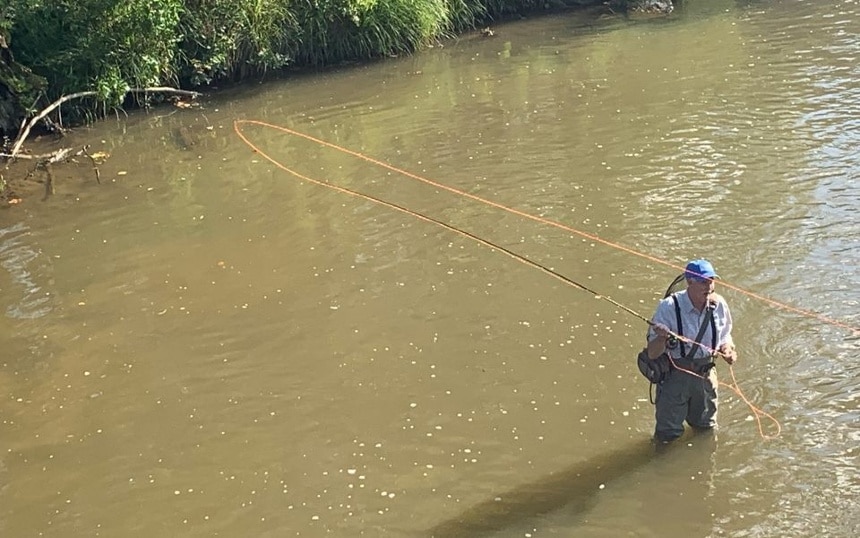In this article, I would like to review the five variables that we use in fly casting.
They are Loop Size, Loop Plane, Loop Trajectory, Line Speed, and Mends. When you add these skills to your casting toolbox, you enhance your ability to make better presentations and ultimately catch more fish.
Loop Size
Let’s talk about loop size. When we are fly casting, we can throw both a narrow and wide loop and each has its own particular application. We should consider a narrow loop to be 2-3 feet wide and a wide loop to be 6-8 feet wide.
We use a narrow loop when throwing for distance, accuracy, or casting in the wind. Most of the Euro-nymph anglers throw a wide loop when fishing with weighted flies when long-distance is not a factor or when casting with a strike indicator such as a Thinga bobber.
It is advantageous to practice throwing both narrow and wide loops so you can adjust your casts to the particular riffles, pools and runs that you may be fishing.
Loop Plane
The next variable I would like to cover is the loop plane. Loop plane is when we move our fly rod from vertical to horizontal and anything in between. Many times, we need to make a side-arm cast to reach back under bankside vegetation for the appropriate presentation. Practice varying your plane from vertical to horizontal while maintaining good tight loops. This is another item to add to your “toolbox of tricks” when out on the stream.
Loop Trajectory
The third variable I would like to review is the loop trajectory. Loop trajectory is when we may have our back-cast go high and our forward cast go low, or vice versa. An example of a loop trajectory might be when we have to throw our back-cast high to avoid brush and trees or with a strong wind coming into our face. This could be approached by casting high on the back-cast and very low on the forward cast with a tight loop which would help to cut through the wind. A low back cast and a high forward cast would be used when the wind is blowing strong at our back. It can be very advantageous to learn to adjust our trajectory from high on the forward cast, to level and then to low, so we can adjust to whatever mother nature may present on any given day
Line Speed
The next variable that we should cover is line speed. Loop speed can be slow, medium, or fast. Line speed can be slow if we are fishing a short length of the line, as in short line nymphing or presenting a fly close. As we increase the amount of line in the air, the line speed can be increased with increased power and by adding the double haul. However, as we increase the amount of line in the air, we must increase the length of our casting stroke to avoid tailing loops.
Mending
The last casting variable I would like to cover is mending, both aerial and water mends. An aerial mend is when we mend the line in the air before it hits the water. It could be a reach mend to the right or left, a pile cast, etc. A water mend would be a mend once the line is on the water, like mending upstream to slow your drift, or mending downstream to speed up your drift. Learning to execute these various mends on the water can yield big dividends as you approach the various water types on our streams.
Tight lines,
Bob
Narrow Loops Fly Casting







